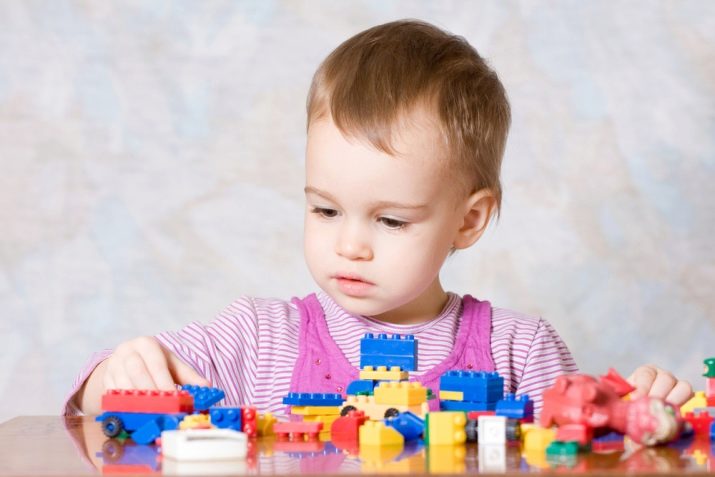Features of thinking, its types and functions
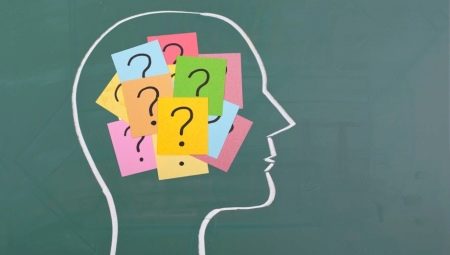
The highest stage of human consciousness is mental activity. In psychology, the types of cognitive activity are studied depending on the level of generalization and the nature of the means used.
What it is?
Thinking is an active cognitive process that manifests itself in an indirect and generalized reflection of the objective world.
In psychology, there is the following definition: thinking is a set of mental works, including perception, attention, the formation of associative chains, reasoning, inferences. Mental activity is one of the highest manifestations of the mental process of an individual and is an internal system for modeling the laws that exist in the world, the ability to predict various scenarios for the development of events, analyze and accumulate a kind of truth.
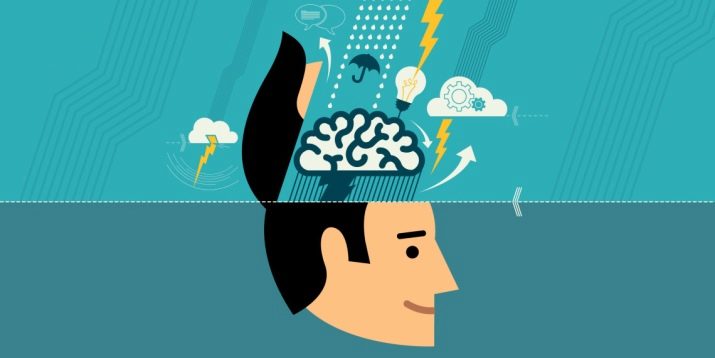
In social science, the main emphasis is on the fact that thought work, although it takes place in the subcortical structure of the brain, is social in nature.
During the mental act, the emotional and volitional sides of the individual are involved. They are manifested in the form of motives and impulses in the name of which the subject is ready to think, reason, look for ways to solve problems. Social Studies considers the thought process to be a complex socio-historical phenomenon, the improvement of which is associated with an increase in abstraction and generalization.
In philosophy the relationship between matter and the act of thought is considered.This means that philosophy is looking for opportunities and ways of knowing the environment through thinking, which is inextricably linked with labor and speech activities, because the reflection of various relationships between concepts is carried out in verbal form. Language, thinking and culture are so closely intertwined that they cannot function without each other.

The main feature of mental activity is the ability of a person to think and solve certain problems that have arisen during cognition or practical activity. For this purpose, the person resorts to the application of laws, rules, concepts. The culture of thinking depends on the degree of mastery by the individual of the methods and norms of the mental process, as well as on the ability to clearly formulate problems, find effective ways to solve them, and draw informed conclusions.
The thought process has some features:
- it is of an indirect nature: when establishing a connection and relations between objects and phenomena, a person relies on his own sensations and perceptions, as well as on his experience;
- in the process of mental work, the subject uses existing knowledge about the general provisions and laws of reality;
- a person has the ability to represent the reflection of connections and relationships between phenomena in an abstract and generalized manner;
- thinking is inextricably linked with language and culture;
- mental work is based on the social practice of the individual and his work.

Processes
The structure of the thought process contains 3 main forms.
- The concept includes the idea of objects and realities that the subject observes. The individual can recognize them by common characteristics. A specific model means true objects such as a house, a table, a car. The relative model is not constant and depends on individual perception. For example, the words "beauty", "happiness", "sadness" each explains in his own way. The content of all definitions is revealed through speech.
- A judgment is a negative or affirmative statement about reality. The process involves auditory, visual, olfactory types of perception.
- Inference is formed as a result of the formation of a new point of view based on existing opinions. The subject builds up various chains of ideas. The main methods of inference are induction and deduction. The inductive method is built on the principle from particular concepts to a general idea of something: a certain circumstance deduces a general law characteristic of all such creatures. If a particular owl can see in the dark, then other owls can also see in the dark. Deduction is based on the movement from a general idea to a particular case. If all owls can see in the dark, then some particular owl can also see in the dark. Only deductive thinking is characteristic of the human subconscious. The consciousness of the individual knows the law and looks for circumstances. At the same time, the individual, having learned about any case, at the unconscious level seeks out the law. The parallel between the two types of thought act is obvious.

Cognitive operations are aimed at the process of operating with concepts and judgments in order to obtain a certain result.
First, a specific situation is created, then information is collected and analyzed. Further, the subject solves the task assigned to him, looks for ways out of the current situation, predicts options for the development of events.
- Analysis involves the mental fragmentation of the whole into parts, the isolation of actions, properties, signs, sides, relationships.
- Synthesis implies a mental process that serves to unite separate parts, properties, relationships into one whole.
- Comparison helps to establish the similarities and differences between concepts, their qualitative characteristics.
- Classification allows you to make a mental systematization of your own ideas, distributing them into groups, subgroups, depending on the similarities and differences.
- Abstraction implies mental distraction (aside) from insignificant signs in order to isolate the object of study from all others and better understand its essence.
- Generalization consists in identifying the common aspects of objects, expressed in the form of rules, laws, formulas, concepts.
- Concretization helps to reveal content by returning thought from a general and abstract concept to a single, more concrete case.
The whole process has the following steps:
- preparation;
- search for ways to resolve the issue;
- inspiration to achieve it;
- checking the results.
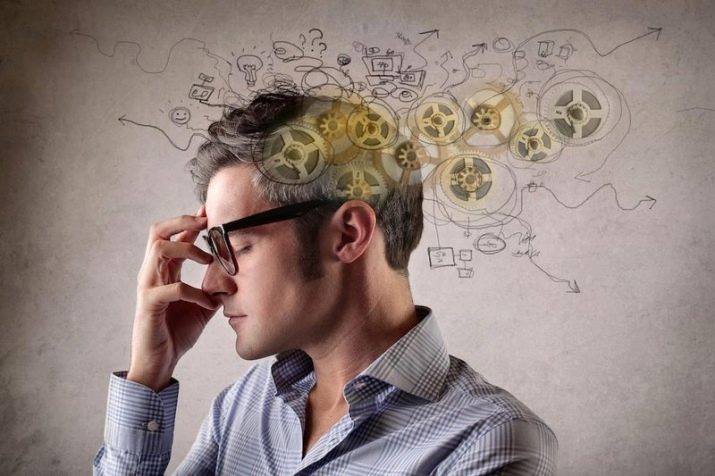
Functions
Thinking has the following main functions:
- goal setting and planning to achieve it;
- comprehension of knowledge, understanding and analysis of the conditions of the situation;
- search for methods of knowledge and ways to solve the problem;
- building a chain of necessary actions;
- collection of missing information;
- control over what is happening and your own behavior;
- assessment of the degree of achievement of tasks based on personal motivation.
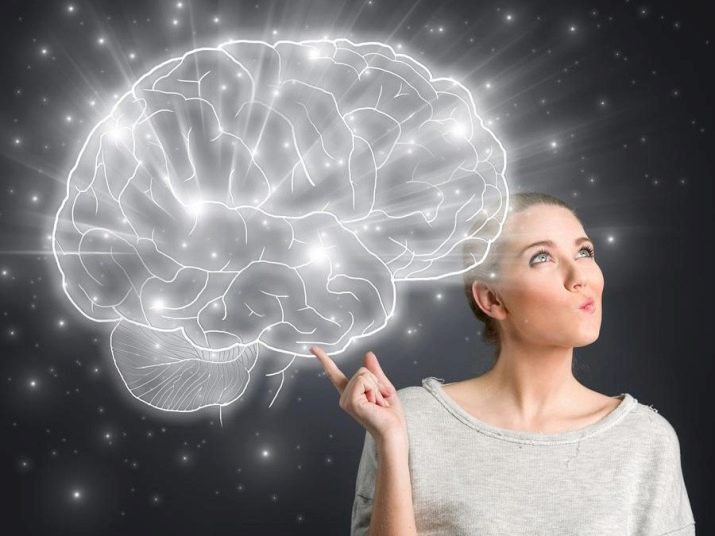
Views
People think about the same events in different ways. Everyone uses their own intellectual technique, uses their own style of thinking. A person uses different types of thinking, depending on the action being performed at the moment. An important role is played by the mediated nature of the mental act. The type of thinking depends on the depth or surface of the thought process, breadth or narrowness, speed or slowness, flexibility or rigidity, originality or triviality.
A thought act aimed at comprehending the problem and self-knowledge is reflective in nature. Some people have it all sorted out in their heads: accumulated facts are grouped. Such structural thinking is useful to the subject in different life situations. A person can think consistently and logically, or he can jump from one thought to another, suddenly change topics and his opinion. In this case, we are talking about linear and non-linear thought processes. Concrete thinking is associated with direct perception of objects.
The individual exists in the social world, therefore the interpenetration of society and the individual is inevitable. Human thinking is provided by areas of the brain that are formed to create group relationships. Sociological thinking implies the perception of social ideas, understanding the events taking place in society, identifying the consequences of unforeseen social actions.
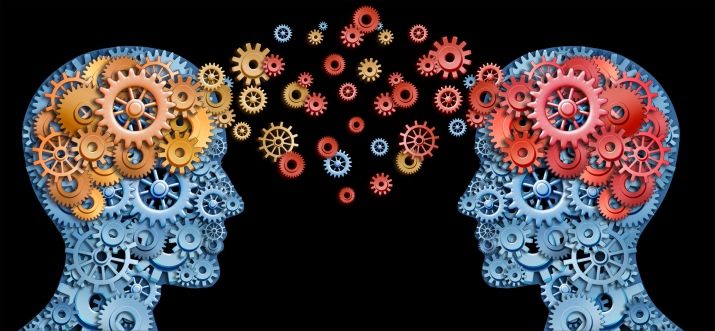
Dialectical thinking helps to understand the material world in its continuous historical development.
Separate thinking means fitting in the brain of logically incompatible attitudes. The resulting contradictions usually serve as a defense mechanism. For example, a person in society demonstrates miracles of humanism, and in the family circle shows cruelty and violence.
A significant deviation in the course of the associative process, difficult switching from one type of activity to another indicate inertia of thinking. This is due to disturbances in thought processes. Occurs in people with mental retardation, epilepsy. Inert thinking may occur in a subject following a brain injury.
The intensive development of information technology drives a modern person into dependence on gadgets and computers. Digital media influence the formation of a personality, which gradually loses the ability for purposeful and effective thinking. In this case, the brain stores in memory not the information itself, but information about its location on auxiliary devices. These factors interfere with the mental reproduction of intelligent objects necessary for solving complex problems.

A discursive view of a mental act is based on a system of interconnected inferences. Algorithmic thinking based on the use of pre-established rules, a specific sequence of actions required to perform typical tasks.
Heuristic type of mental activity productive, as it is focused on unconventional problem solving. Creative thinking leads to an improvement in the solution of the problem, fundamentally new results, and various discoveries. The ability to quickly switch from one type of thought process to another indicates flexibility in thinking. A flexible mind can benefit from the most adverse situations.
Signed thinking characterized by the transformation of information through inference. Individual symbols are combined into larger units according to certain rules. The result is a thought in the form of a concept or phrase that fixes the relationship between objects. There are other kinds of thinking as well.
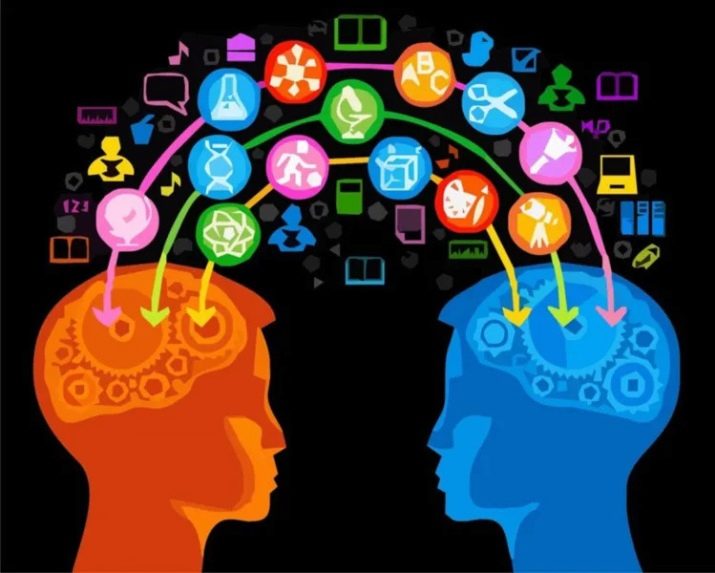
Clinical
Psychology knows a specific thought process associated with medical activity. The profession of a doctor implies the ability to correctly diagnose, treat and determine the prognosis of the course of the patient's illness. The doctor relies on his knowledge, experience and professional intuition. Clinical thinking begins from the first minutes of communication with the patient. At the very beginning of the study, based on the signs of the disease, the doctor makes a preliminary diagnosis. Timely prescribed correct treatment can save a person's life.
This type of mental activity can be called a kind of productive thinking.
Ecological
A set of views, different points of view, fundamental positions and behavior of an individual is aimed at preserving natural resources. The rational management and use of them by humanity is inextricably linked with ecological thinking. It presupposes the choice of a certain model of the subject's behavior. Man is a part of nature, and therefore must take care of it. The widespread deforestation leads to a reduction in vegetation. Excessive consumption of water for other purposes leads to a decrease in water resources. Air pollution by emissions of harmful elements and other waste by various enterprises reduces the amount of oxygen on the planet and interferes with the normal functioning of living things. The development of ecological thinking helps to prevent the harmful influence of mankind on nature. The specific contribution of each individual to the improvement of nature is important for the ecological state of the planet.

Visual
Several people can look at the same object, but each of them perceives its image in its own way. Children, using the same constructor, make up different shapes. The creative ability of a person to perceive an object or phenomenon with his eyes and imagination at the same time is called visual thinking. For example, you need to find out how much time will be on the dial in half an hour, if at the moment the clock shows 3:40. The solution in an intelligent way will look like this: add 30 to 40 minutes, you get 70. Since there are 60 minutes in an hour, you need to convert 10 to next hour. Answer: 4: 10. Visual thinking involves mentally moving the hand on an imaginary round dial and getting exactly the same result. In this case, there is a connection between the image and other objects.
Proactive
People with this type of thinking do not respond to external stimuli. They reflect and make their decisions regardless of the prevailing conditions and current events. These individuals respond correctly to negative situations, strive to make positive adjustments to them. They can control their emotions and actions. They prefer to replace any destructive thoughts with positive thoughts.A person should strive to achieve the goal, regardless of various obstacles.

Theoretical
Thinking work may not be directly related to practical action, but be based on the knowledge of laws and rules. In this case, the theoretical thought process is aimed at studying the properties of objects and internal characteristics of phenomena, identifying patterns, generalizing experience, building conceptual models, discovering laws and creating theories. This kind of thinking is characteristic of scientific activity. It allows a person to identify and analyze the main contradictions of the problem being solved or the information being studied, to develop ways of action.
Design
In order to achieve a specific result, a person is able to think in certain patterns. He looks at the case as a project. The choice of means depends on what result the subject is striving for. It is not the process itself that is important to him, but the achievement of the final result.
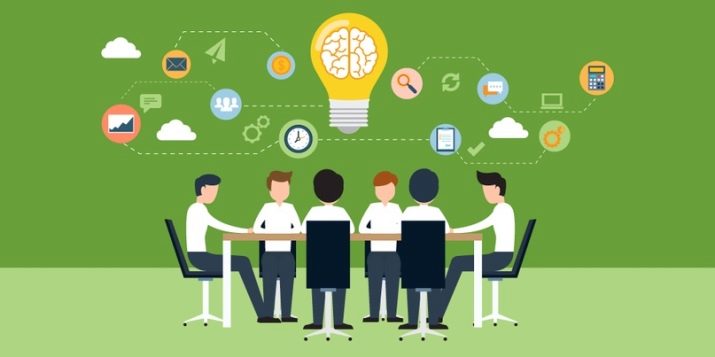
Constructive
The implementation of any innovative ideas is impossible without constructive thinking. It is built on the generation of raw thoughts without the presence of all kinds of assessments and judgments in them. This type of mental activity is characterized by concreteness, purposefulness, positivity, phasing and detachment from emotions.
The ability to think constructively helps to solve difficult life problems and get out of them with minimal losses.
Empirical
This type of thought process is based on the generalization of sensually or visually perceived properties and relationships. It is a primary generalization based on experience and is the lowest, elementary level of cognition.
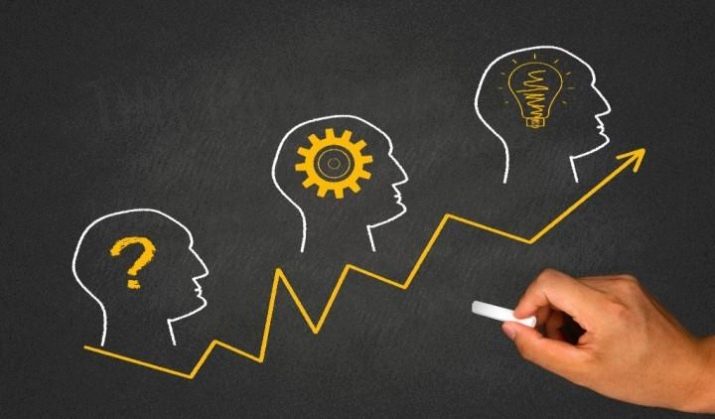
Methodology
Various techniques are used to study the mental level. Methodology "Simple analogies" helps to identify the nature of logical connections and relationships between concepts. In psychology, there are various methods of brainstorming, designed to counter the one-sidedness and stereotypes of human thinking.
Very popular method of Edward de Bono "Six hats". The technique is designed to disrupt the brain's habitual state of thought. The British psychologist offers 6 ways to consider and solve one problem. This method is a psychological role-playing game in which the colors of the hats suggest the inclusion of a certain mode of thinking. An individual, having tried on one of the hats, is obliged to turn on the appropriate mode. The game requires a lot of care, since the headdresses of different colors are applicable to any area related to mental work. The problem should be considered not in the struggle of ideas and arguments, but in their unity.
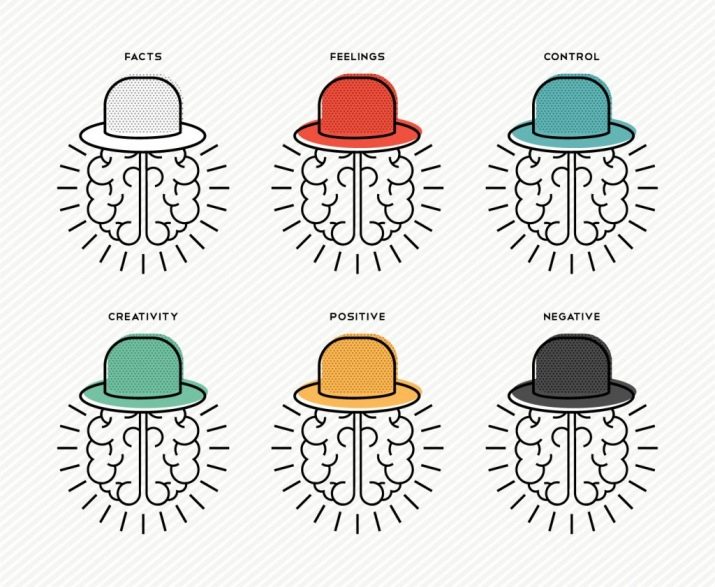
A full vision of the situation appears only after the player tries on all 6 hats.
- The white headdress implies the search for missing information and the application of already known facts. The retrospective method of cognition helps to identify the cause-and-effect links and patterns in the development of available information.
- Having put on a red hat, a person must listen to his inner voice. Intuition and personal feelings play a big role at this stage. An individual views the problem through the prism of his feelings. In a collective discussion, it is important to listen to each subject, to understand what inspires him, as well as the background of the proposed solution.
- A person wearing a black hat must feel like a pessimist. He must calculate all possible contingencies and risks. You should pay attention to the weak points of the idea. Sometimes, positive-minded people tend to be reluctant to really look at perceived obstacles. They underestimate the situation. A healthy dose of criticism must be present when thinking of new projects.
- The yellow hat allows the person to look at the problem in a positive way. She sets up an optimistic mood.You need to consider carefully all the strengths of the idea and consider in detail the benefits of each solution. The yellow headgear is especially important when there is doubt about the success of the project.
- With the green hat on, the subject must try to find unusual solutions to the problem. To this end, it is necessary to activate creative thinking, the search for original views.
- The blue hat is recommended to be worn by the manager before making a decision. He first sets a specific task for those present, and at the end of the event he summarizes the final result.
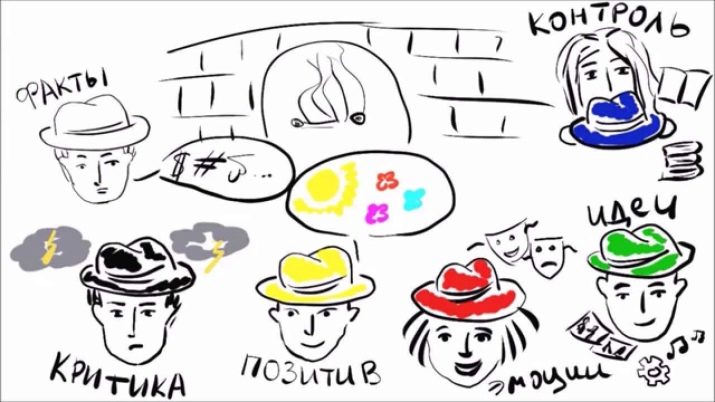
Development methods
Thinking begins to take shape in early childhood. By about a year, the rudiments of thought processes appear. The baby learns the world around him, thereby accumulating the necessary components necessary for mental activity. The speed and quality of the formation of thinking depends on the parental efforts invested. It is very important to work with your child regularly.
The initial stage is associated with visual-action thinking... For the development of mental activity, the baby needs to perform the simplest tasks: get a toy, open a jar, bring some thing. The next stage is closely related to generalization. The transfer of experience through adult speech facilitates learning.
When a child begins to use his own speech, he begins to fantasize. At this time, figurative thinking is formed, contributing to the development of creative abilities. The main means of developing thought processes is learning, including the formation of speech and obtaining information through verbal transmission of data.
During school years, a child can draw conclusions based on logical chains and previously accumulated knowledge... He operates with concepts. If he does not have enough knowledge about an object or phenomenon, he uses inferences. Reading books fosters imagination.
Drawing, wood carving, embroidery and knitting develop abstract thinking.
